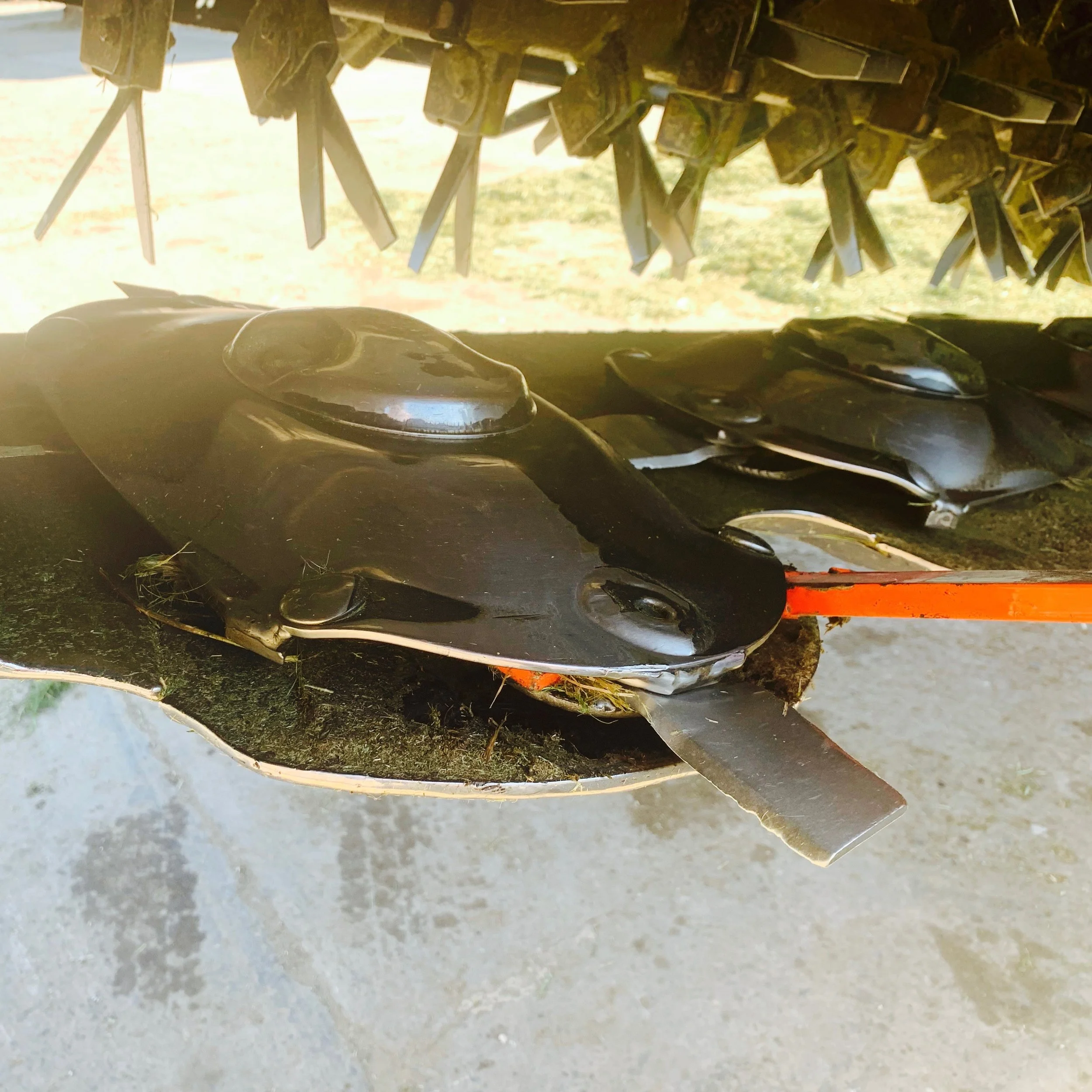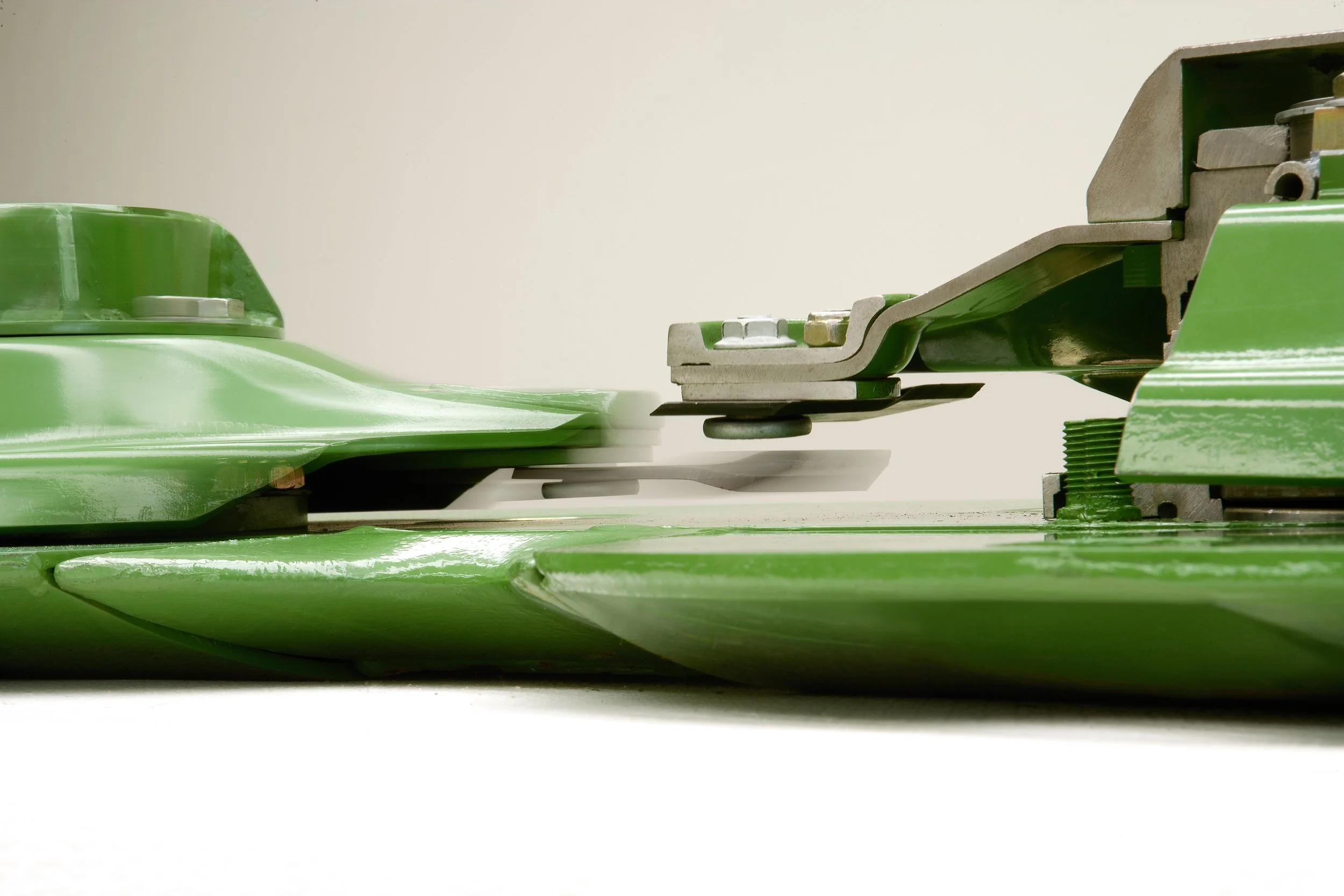Time to change the mower blades?
The mower manufacturers and the parts supply specialists will advise you that you need to change the blades on the mower at regular intervals – of course they do, it’s in their interest to sell you boxes and boxes of new blades. What we need to know is:
When is the correct time to change the mower blades?
There is no simple answer to that question because it will depend on what forage you turn into silage and what the blade has been cutting – young ryegrass, old pasture, mole hills or stones and rocks? Blades cutting different products will have different rates of wear. The only way to decide when to change blades is to have a good look at them. Once there are chunks missing it’s easy to think it might be time to swop the blades but then again there is the cost…
Sometimes you open the skirts to check on the blade condition and you are amazed at just how knackered the blades look but just how well the mower is still cutting. That is down to speed, the speed that blade meets the grass, if the speed is high enough then the cut will be clean – ish… And those blades are travelling at some reasonable speed…
If the disc is spinning at between 3000rpm and 3200rpm such as the McHale Pro Glide mowers, the tips of the blades could be travelling around 1.4m per rotation – and that comes to a velocity (if my maths is correct) of over 160 miles per hour. Pretty much any sort of forage crop that gets hit by a piece of metal at 150mph is going to come off second best. So it’s not really any surprise that the blade still cuts the crop once it looks past its best.
So is it really necessary to change the blades if there is still some metal there?
Well there is cutting and there is cutting and a new sharp blade will definitely do a different job to a blade battle hardened in the stone wars. A cleaner cut is what a new blade will deliver and there is some evidence that clean cuts lead to a faster re-growth. The thinking is that the cleaner the cut, the less damage there is to the plant that is left. A less damaged plant will lose less moisture and can begin to photosynthesise sooner and re-grow faster.
If your contractor is using knackered blades, you need to ask them to pop in some new ones as it’s costing you money.
It’s also costing the contractor too because new blades take less driving – and therefore less diesel - than old ones. This is something we all know, but it’s difficult to put a finger on the scale of the difference. Difficult but maybe not impossible, so let’s explore with some maths.
A mower blade that’s cutting a stalk requires some power to spin it, or some power to regain the energy it lost going through the stalk at least. Obviously this isn’t the only power demand, mowing a crop requires power to move the tractor forwards, lift the crop through the conditioner, run the air-con and the radio etc etc. But the cutting of the crop is a significant proportion. A new blade edge is less than 1mm thick; a blunt one might be nearer 3mm thick. It’s reasonable to assume the power requirement to get the metal through the stalk might be doubled in the blunt blade compared to the new one. If the power to actually cut the crop is only 10% of the overall tractor output then an old blade might be using 5% more fuel than new ones.
The cost of new mower blades
Now at the time of writing the cost of a replacement blade is about the cost of a litre of diesel but know knows what this will be by now. What I do know is running 6m of mowers on roughly level ground uses about 250 to 300 litres a day on a 200hp tractor. A 5% increase is an additional 12.5 to 15 litres of fuel per day. There are 28 blades on this particular set of 6m of mowers, which equates to 28 litres or two days of extra fuel to replace the blades as a rough calculation.
The takeaway fact should be to keep a close eye on those mower blades if you are a silage contractor or a farmer because changing them might be a whole lot cheaper than you originally thought. And changing them should be quick and simple and you don’t always need to do a full set. Quick-change blade systems should probably be renamed “you might change um” blade systems because we all know you are much less likely to change the blades if it’s a faff or a battle. The overlap means the inside discs don’t do so much work whilst the outside ones are more vulnerable to accident impacts with non forage items. So you can often delay changing some of the part-timer blades for a little longer.
What is important is to change both blades on each disc. The difference in mass or weight of a new blade against a worn one might not be much on the scales but the difference at three thousand revolutions per minute is significant – and that difference might be enough to start excessive wear on the disc bearings. So keep an eye on the condition of blades and change in pairs to speed sward re-growth and reduce diesel consumption.
If you want to discuss how to improve your silage or want to discuss any of the other aspects of silage making covered in this series – contact Jeremy Nash at Jeremy@silageconsultant.co.uk
Follow The Silage Consultant on social media:




